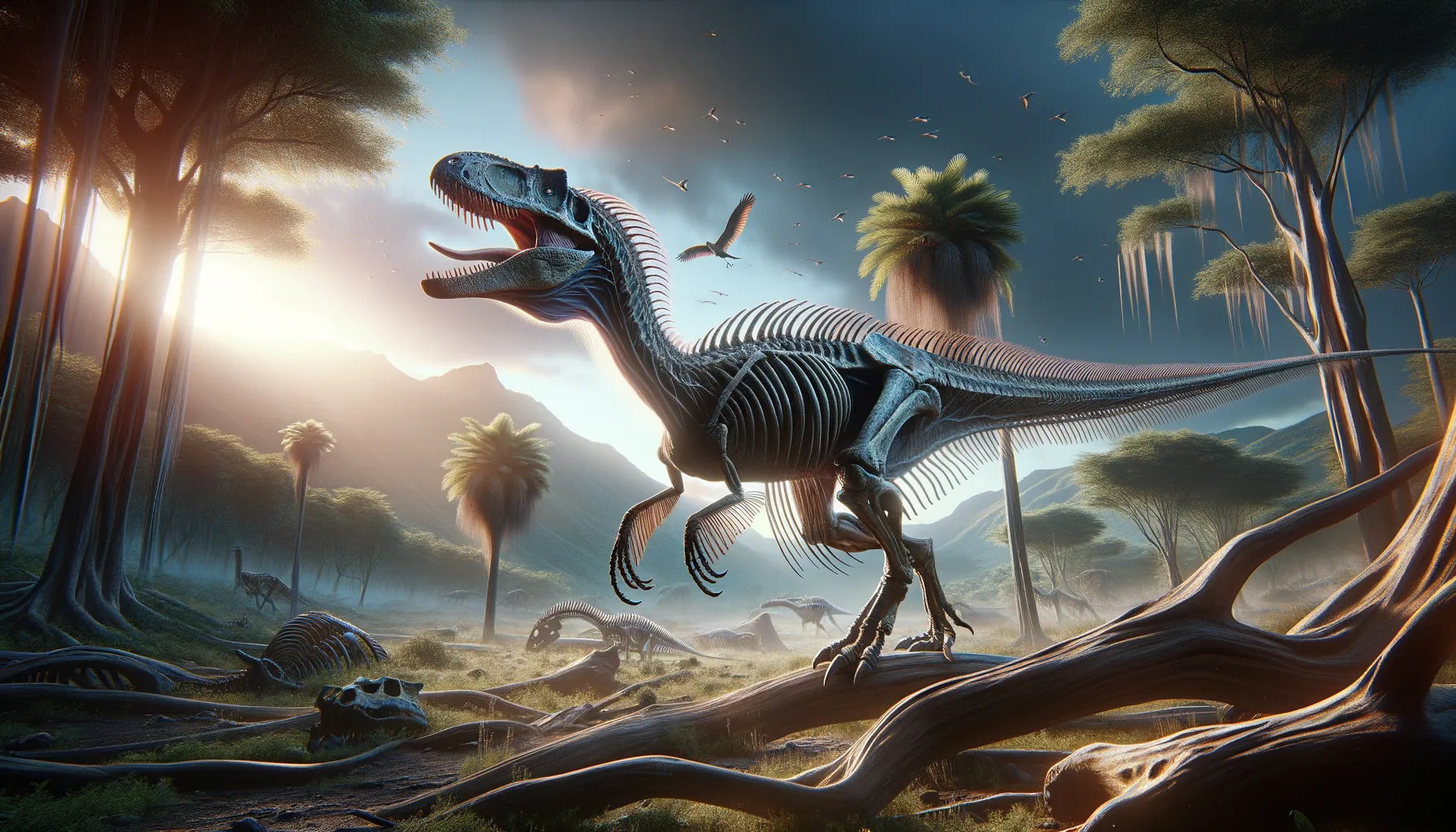
Aerosteon
The air-boned predator of the Cretaceous.
Period
Cretaceous
Length
About 9 meters long.
Height
Roughly 3 meters tall at the hip.
Weight
Approximately 1,380 kilograms.
Aerosteon was a fascinating theropod dinosaur known for its unique hollow bones, which scientists believe may have been related to a respiratory system similar to modern birds. This carnivorous dinosaur lived during the Late Cretaceous period in what is now South America. Its name, meaning 'air bone', reflects the distinctive air-filled cavities in its bones that made it lighter and possibly more agile than other similar-sized dinosaurs.
Diet
Aerosteon was a carnivore, primarily preying on smaller dinosaurs and other contemporary animals. Its diet would have included a variety of meat sources available in its habitat.
Hunting
Aerosteon likely used its agility and speed for ambush attacks. It may have been a solitary hunter, relying on surprise and stealth to capture its prey with powerful jaws and sharp teeth.
Environmental challenges
Living during the Late Cretaceous, Aerosteon faced challenges from a changing climate and environment. Shifts in vegetation and available prey would have required it to adapt its hunting strategies. It also had to compete with other theropods and predators for resources in its habitat. Periodic climatic changes may have influenced its reproductive and survival patterns.
Speed
Moderate pace, suitable for short sprints.
Lifespan
Estimated to be around 20 to 30 years.
First discovery
Discovered in Argentina in 1997 by Ruben Dario Martinez.
Fun Facts
- Aerosteon means 'air bone' in Greek, named for its light, hollow bones.
- This dinosaur lived around 85 million years ago during the Late Cretaceous period.
- Aerosteon was discovered in Argentina, a hotbed for dinosaur fossils.
- It is believed to have been a carnivore, likely hunting smaller dinosaurs.
- Fossils suggest Aerosteon had air sacs in its bones, similar to modern birds, which might have helped with breathing.
- Despite its bird-like breathing system, Aerosteon couldn't fly due to its large size.
- The discovery of Aerosteon provided insights into how breathing systems evolved in theropods, the group of dinosaurs that includes T. rex.
Growth and Development
Aerosteon likely experienced rapid growth during its juvenile years, reaching near full size relatively quickly. Its hollow bones suggest an adaptation that might have supported a high metabolism and active lifestyle. The development of its air sacs hints at a possible evolutionary step towards more efficient respiration.
Habitat
Aerosteon's habitat in ancient South America included semi-arid plains and forested areas. This environment provided ample opportunities for hunting different prey and offered cover for stalking or ambushing. Seasonal changes in the landscape would have affected the availability of food and water resources.
Interaction with other species
Aerosteon may have competed with other predatory dinosaurs for food and territory. It might have encountered herbivorous dinosaurs as prey or potential threats. Interaction with other species would have influenced its social behavior and territorial instincts, possibly leading to confrontations with other predators.
Natural lifespan
Aerosteon had a natural lifespan of 20 to 30 years.
Reproduction
Like most theropods, Aerosteon was likely an egg-laying dinosaur. Its reproductive behaviors might have included nesting, where females laid eggs in carefully chosen spots. Parental care could have been limited, with hatchlings fending for themselves shortly after birth.
Social behaviour
Aerosteon may have been a solitary predator, preferring to hunt and roam alone. Its social structure might have included occasional encounters with others of its kind, particularly during mating seasons. Territorial interactions could lead to displays of aggression or dominance.
Fossil locations
Fossils of Aerosteon have predominantly been found in Argentina, adding to our understanding of dinosaur distribution in South America. These fossils provide crucial insight into the evolutionary adaptations of theropods during the Late Cretaceous period.
